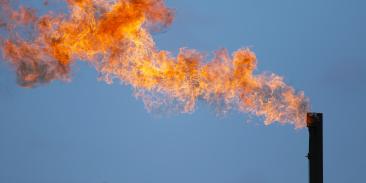Study: Nitrogen Balance is Strong Indicator of Sustainable Agriculture Progress
Metric provides robust, user-friendly measure of nitrogen losses to air and water
(WASHINGTON, DC – February 7, 2018) An article published today in the journal BioScience demonstrates that nitrogen balance (N balance) is a simple, science-based way to track environmental outcomes from conservation practices at the farm, regional and national levels.
N balance measures how much of the nitrogen fertilizer applied to crops is lost to the environment. Improving N balance – through practices such as cover crops and crop rotation – reduces water pollution and greenhouse gas emissions, while using fertilizer more efficiently for crop yield.
“With farmers, food companies and policymakers under increasing pressure to prove that on-farm conservation efforts are delivering real water quality and climate improvements, saying ‘trust me’ doesn’t cut it anymore. N balance is a user-friendly way to demonstrate environmental progress,” said lead author and Environmental Defense Fund (EDF) lead senior scientist Eileen McLellan.
Researchers from EDF, University of Nebraska and Cornell University tested the relationship between N balance and nitrogen losses using two complementary approaches: an analysis of published field data and a simulation model of 18 locations across the Corn Belt. Each approach provided compelling evidence that N balance is a robust proxy measure of nitrogen losses to the environment.
“The power of N balance comes from its simplicity and scalability,” added McLellan. “Existing approaches for measuring environmental outcomes are complex and burdensome. N balance is simple to calculate with readily available farm data.”
Although N balance has been used in Europe and with livestock agriculture, it has yet to be widely applied to U.S. commodity-scale row crop production.
In 2018, EDF will collaborate with farmer, food industry and research partners to conduct pilot projects to test the value of N balance for benchmarking improvements in nutrient runoff and greenhouse gas emissions – from the individual farm level to an entire supply chain sourcing region.
Funding disclosure:
Funding support for this work came from the Walton Family Foundation, the David R. and Patricia D. Atkinson Foundation and the Atkinson Center for a Sustainable Future – Cornell University.
With more than 3 million members, Environmental Defense Fund creates transformational solutions to the most serious environmental problems. To do so, EDF links science, economics, law, and innovative private-sector partnerships to turn solutions into action. edf.org
Latest press releases
-
EU Methane Regulation Emerges As Strategic Tool For Energy Security
December 10, 2025 -
Court Strikes Down Trump Administration’s Reckless Wind Energy Permitting Ban
December 8, 2025 -
Court Orders Trump Administration to Release Records of Secret Group That Wrote Report Attacking Climate Science
December 8, 2025 -
COMING SOON: An effort to weaken our popular chemical safety law
December 8, 2025 -
Groups File Lawsuit Challenging Trump EPA Final Rule That Delays Methane Pollution Protections from Oil and Gas Industry
December 4, 2025 -
New Statewide Survey: As Electricity Demand and Costs Skyrocket, Arizonans Support Building More Wind and Solar Energy
December 4, 2025










